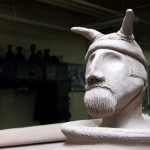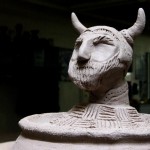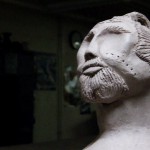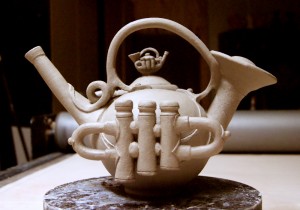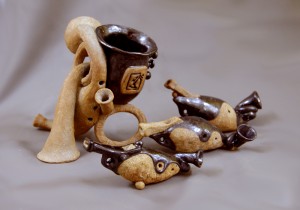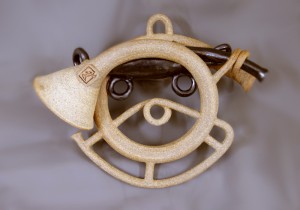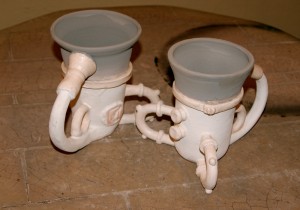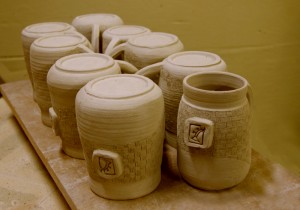This is a bit off-topic for my normal ceramic musical instrument theme, but some of my newer ocarinas are destined to find a place in a newly constructed saggar. Saggars have been around since the Chinese used them to protect wares from ashes in a wood firing that would otherwise land on a piece and alter the intended look of the glaze. Oddly enough, saggars today are used primarily to create unusual firing atmospheres within a kiln to protect the kiln and the other wares from being altered by the vapors created within a saggar. Go figure.
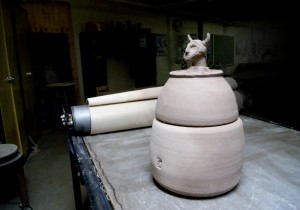 Those who know me won’t be shocked that my saggar creations include a touch of whimsy. Each new saggar is topped with my own version of a kiln god… generally (in my style) a Nordic-looking dude with a menacing facial expression. It is a tradition among potters to set kiln gods of varying creatures atop a kiln during the firing process to appease the immensely powerful flames within the kiln to be kind and produce beautiful works. Don’t go all fundamentalist on me with the kiln god references…it is just me having some fun with a new (to me) clay used for saggar construction. I am seeing some potential for future sculptural projects that may be born from the saggar womb of Sagar the Glazinator.
Those who know me won’t be shocked that my saggar creations include a touch of whimsy. Each new saggar is topped with my own version of a kiln god… generally (in my style) a Nordic-looking dude with a menacing facial expression. It is a tradition among potters to set kiln gods of varying creatures atop a kiln during the firing process to appease the immensely powerful flames within the kiln to be kind and produce beautiful works. Don’t go all fundamentalist on me with the kiln god references…it is just me having some fun with a new (to me) clay used for saggar construction. I am seeing some potential for future sculptural projects that may be born from the saggar womb of Sagar the Glazinator.
